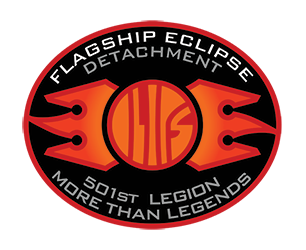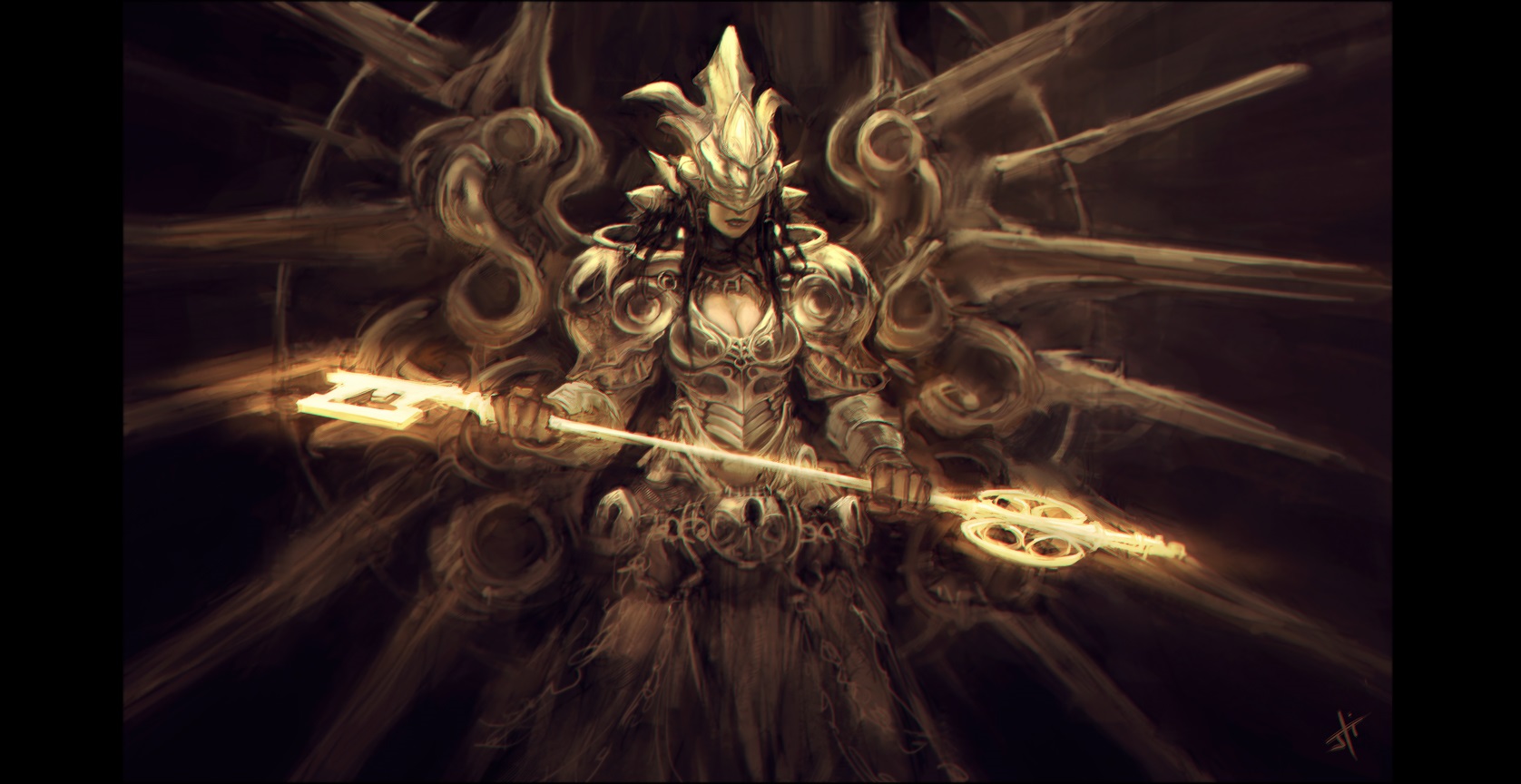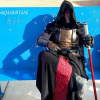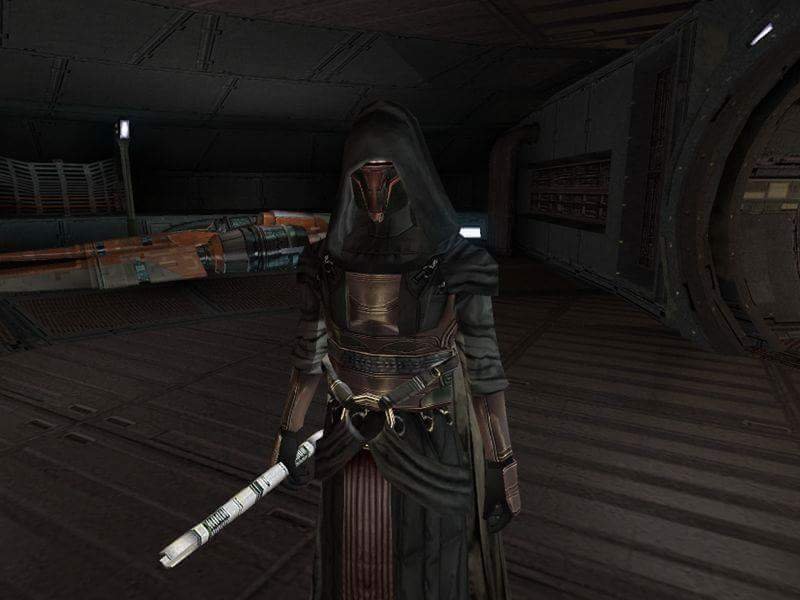-
Announcement
Welcome to the forums!
If you are a newly-approved member, make sure you check out the New Member Checklist!
If you are a Detachment member and can't see the member-only area, post here for access.
-DV
-
Posts
2,567 -
Joined
-
Last visited
-
Days Won
346
Content Type
Profiles
Forums
Gallery
Events
Posts posted by DarthValkyria
-
-
The shin should be a spat, not hard armor. When you watch the show, it creases like fabric around the ankle when she moves.
-
The only thing I see is that the armor looks a little too red for the KOTOR style that the armor is, the rings at the bottom of the armor should be held on by straps vs the single string, maybe centering the main sash ring a bit more, and the sash itself shouldn't flare at the bottom, but be a uniform with from top to bottom.
-
Sith have too many varying personalities and styles to be able to tie down a single, approvable CRL for it. The Jedi have it easy since they technically work well together and are unified under specific teachings and whatnot (at least majority since there are always exceptions) while the Sith all sort of did their own thing and didn't really have much of a "school" aspect to theirs (academies aside since aside from the acolytes, there are no solid references to having some sort of "dress code"). It's similar to Jedi going to a university to follow one of a handful of degrees that have all been planned out by a board of education and whatnot, vs the Sith pretty much all being trained by tradesmen with every master teaching their apprentice their own special flavor and ways of doing things, and spanning a much larger spectrum of possibilities.
-
I went with a nice, high quality men's long sleeve in a few sizes larger than I am so that I could get the proper "scrunchiness" of the sleeves that is shown in the file references. Nothing fancy, but I did rip the tag out of it since I hate tags. Sewed in the piping across the chest and added a high enough collar and bam.
-
The only detail I can make out is your hood is way too high. Take some sticky Velcro and add some to the inside of the hood and into the mark sheet it keeps the hood just barely over the eye slit.
-
The sole those is a little too accentuated and stylized for Revan. It should be a simple, fairly flat sole.
-
Hello
I'd like to become a member of the detachment Please.
http://www.501st.com/members/displaymemberdetails.php?userID=21039
Hi there.
Detachment access is only for those 501st members with a costume that falls under the detachment. Your profile only lists a TK, so 501st access is the highest access you'll have until you are approved with a Flagship-approved costume.
-
This looks fantastic!!!
-
The only one I saw was linked several weeks ago in the acolyte area, but they were incomplete and lacked some detail.
-
Congrats and welcome!
-
That is pretty much the cost you'll find across the board for well made EU characters who's armor does not consist of easily vac formed shapes unless you make your own, which often costs even more due to R&D and materials.
-
Honestly, I see him in the same boat as Han Solo. No, he is not a Jedi, but he is absolutely not dark side, either. As a clone of the original Starkiller, he is inherently good, and shows that through the canonical story of TFU.
Yes, he was trained by Vader at the start of the game, but he escapes and ends up helping the rebellion, much like Han did when he was a pilot in the Imperial Academy. This version never actually kills anyone before the point where this costume is shown, and in fact, is to be destroyed by Vader's orders for not killing a test droid that backs the fact that he is not dark side. The story writes this clone of Starkiller as good, whether the player picks light or dark through gameplay (much like Revan and his "canon" storyline places him as back to light side, whether you finished the game as dark or not.
By those details, I would put him in the RL. Under what, I'm not sure as I'm not familiar with the breakdown of their designations, but he is very much a "good guys" character at this point and not a "bad guy" as the 501st holds. Much like Mara Jade has both a dark and light side version in the different Legions, so should Starkiller/Galen Marek.
-
Those look snazzy! Can't wait to get mine.
-
 1
1
-
-
The rule is a complete approved source (concept art from the company/artist releasing the character, game files, comic stuff, etc) 360 degree view of the entire character. Whatever is visible is what needs to be shown in the completed costume, so long as all the detail is present.
-
It is the plastic pleather fabric used by cosplaysky.
-
That beard should be canon imo.
-
They should be covered by the hood parts on the shoulders. When I rebuilt my own armor, I made slits in the short to feed the straps through to clip together on the back side of my shoulder so they were completely hidden.
-
I love the Adraas mask so much

-
As per the CRL, rigid armor is required for approval. The fabric armor does not meet the requirements of the references and therefore,should not be approved.
the cloak should be pleated in this fashion as well.

-
TK/TX-31101, Garrison Tyranus' Eastern Regional Armorer, requesting 501st level access to help some folks gather information on prospective builds.
Seems trivial, but can I get you to post a link to your 501st profile here please? http://www.theflagshipeclipse.com/forums/index.php?/topic/1660-request-501st-andor-detachment-access/
-
The strapping shouldn't matter that much since it shouldn't be seen at all. The type and thickness depend on what you personally put it through in terms of required durability. The straps should be leatheresque, meaning so long as it looks like leather (and not hi gloss) then it only comes down to, again, durability and what hell you are going to be putting it through.
When I build my armor, I fashioned a harness out of 1.25" strapping in order to keep all the sections of the armor fitting nice and neat against me. It has the straps that go over the shoulders (though under the shirt), around the chest area, around the waist area, and around the hip area. This keeps the various sections from flaring out funky.
On the straps, I still use Rob's from my old MWA kit before I built mine since it's a good piece and I haven't had time to do my own, but if you are redoing straps, I would suggest using something meant to hold up to wear and tear like the faux leather upholstery stuff that thick and sturdy, as well as coming in several textures.
-
It looks great so far!
-
This looks fantastic! Also worth mentioning, they have announced Dr. Aphra is getting her own comic here soon, so there should be PLENTY of references abound!
-
If you can post a picture or a link to leather mystics gloves it would be of great assistance in gauging applicability to the requirements.




Seventh Sister - SW Rebels Inquisitor
in Seventh Sister
Posted
If you want to go off the real costumes, both Disney locations also use soft material spats.